Knee pain physiotherapy treatment at home
Call Us: +91-9421750231, +91-7875411115.
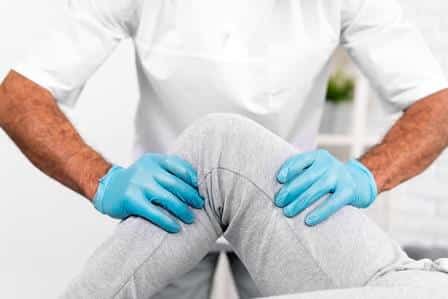
How does knee pain physiotherapy treatment at home help?
knee pain physiotherapy treatment at home is aimed at providing maximum flexibility and mobility to the knee joints. In addition to this, it also helps in managing knee pain, strengthening the muscles around the knee joints, reversing the damage and preventing further episodes of pain and injury.
The human knee is a hinge joint that is comprised of the tibia and the femur. The patella, or kneecap, is located in the front of the knee. The knee is supported by four ligaments. Two shock absorbers, each called a meniscus, are found within the knee.
Pain in the knee can be caused by repetitive trauma and strain or injury. Occasionally it occurs for no apparent reason. When knee pain occurs, you may experience functional limitations that include difficulty walking, rising from sitting, or ascending and descending stairs.
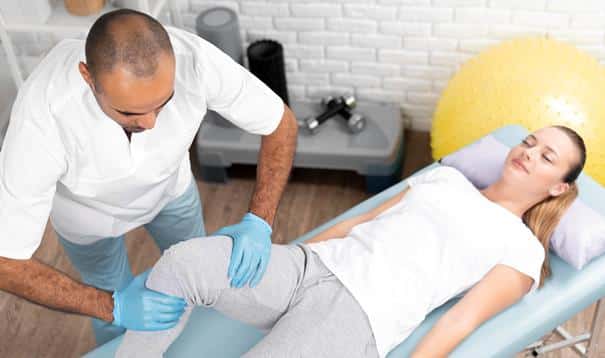
Physiotherapy for Knee pain Treatment methods
Injections method
- Corticosteroids. Injections of a corticosteroid drug into your knee joint may help reduce the symptoms of an arthritis flare and provide pain relief that may last a few months. These injections aren’t effective in all cases.
- Hyaluronic acid. A thick fluid, similar to the fluid that naturally lubricates joints, hyaluronic acid can be injected into your knee to improve mobility and ease the pain. Although study results have been mixed about the effectiveness of this treatment, relief from one or a series of shots may last as long as six months.
- Platelet-rich plasma (PRP). PRP contains a concentration of many different growth factors that appear to reduce inflammation and promote healing.
Physiotherapy Treatment method
Strengthening the muscles around your knee will make it more stable. Your doctor may recommend physical therapy or different types of strengthening exercises based on the specific condition that is causing your pain. knee pain physiotherapy treatment at home
If you are physically active or practice a sport, you may need exercises to correct movement patterns that may be affecting your knees and to establish good technique during your sport or activity. Exercises to improve your flexibility and balance also are important.
Arch supports, sometimes with wedges on one side of the heel, can help to shift pressure away from the side of the knee most affected by osteoarthritis. In certain conditions, different types of braces may be used to help protect and support the knee joint.
Surgical methods
Arthroscopic surgery: Depending on your injury, your doctor may be able to examine and repair your joint damage using a fiber-optic camera and long, narrow tools inserted through just a few small incisions around your knee. Arthroscopy may be used to remove loose bodies from your knee joint, remove or repair damaged cartilage (especially if it is causing your knee to lock), and reconstruct torn ligaments.
Total knee replacement: In this procedure, your surgeon cuts away damaged bone and cartilage from your thighbone, shinbone and kneecap, and replaces it with an artificial joint made of metal alloys, high-grade plastics and polymers.
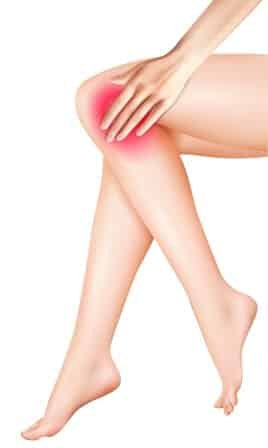
Various types of Knee pain
-
Acute Pain:
Mainly occurs due to external factors like twisting, strain due to overextension of the muscles and ruptured or torn muscle tendons. The pain in such cases occurs often immediately. The patient can opt for painkillers for immediate pain relief and gradually move to other forms of pain management like physiotherapy, massages, acupuncture, etc.
-
Sub-Acute Pain:
This occurs from 2-6 weeks after injury. knee pain physiotherapy treatment at home is a good time to initiate gentle motion around the knee to help regain mobility.
-
Chronic Knee Pain:
It is a form of pain that is caused by degeneration or inflammation of the joint. The pain in such cases develops continuously and its intensity increases over the passage of time. While knee pain physiotherapy treatment at home is a great way to manage pain and to prevent further damage to the knee joint, but in a few cases, where the pain refuses to subside, knee replacement surgery might be recommended.
Can A Customized Physiotherapy for Knee pain Help?
-
Advice and early activity
There is significant evidence to prove that encouraging early movement in the case of Knee pain is one of the most significant aspects of treatment in this condition by knee pain physiotherapy treatment at home.
-
Mobilization or Manipulative Physiotherapy for Knee pain
This aspect concentrates on promoting mobilization of the specific affected area. The approach of manipulative knee pain physiotherapy treatment at home is used to target the specific point of pain for the purpose.
-
Specific stabilization exercises
In this aspect of physiotherapy, stress is laid on improving the strength and stability of the muscles which have been weakened due to Knee pain.
-
General exercises and stretches
A series of properly structured exercises and stretches are usually carried out in the context of the patient’s individual condition and cause of the Knee pain.
-
Ergonomic advice Physiotherapy for Knee pain
Since work-related hazards account for more than 65% of lower back problems, physiotherapists also concentrate on providing accurate ergonomic devices, guiding the patient on using the appropriate infrastructure at work to avoid and cure Knee pain.
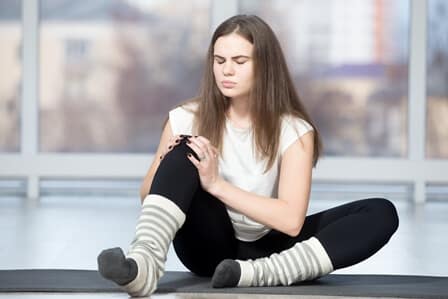
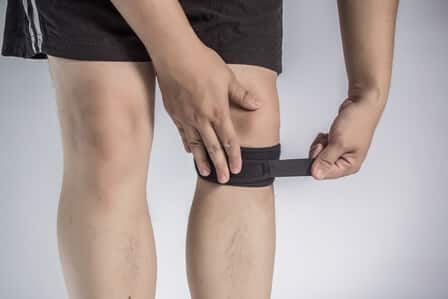
COMMON Physiotherapy for Knee pain INCLUDE
knee pain physiotherapy treatment at home, most of us have realized that the most important, time-consuming and arguably, the most rewarding aspect of our practice is providing ‘advice and education to our patients. This may include discussing their concerns, teaching skills and in many cases re-educating unhelpful beliefs and behaviors.
Assessment of the patient’s educational needs, often during the interview, is critical for determining how education should be tailored and structured. Furthermore, clinicians who are unaware of their patients’ educational needs and readiness to learn have the potential to inadvertently contribute to poor patient outcomes.
Physiotherapy for Knee pain TECHNIQUES ARE:
- Patient education
- Exercise therapy
- Activity modification
- Advice on weight loss
- Hot fomentation
- Knee bracing
Physiotherapy exercises For Knee pain
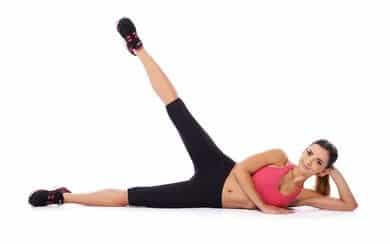
Side Leg Raises
Strengthening these muscles through side leg raises can also help prevent injury and pain with the hip, knees, and lower back. If your knee’s not at its best, start with a simple strengthening exercise for your quadriceps, the muscles in the front of the thigh. This move puts little to no strain on the knee.
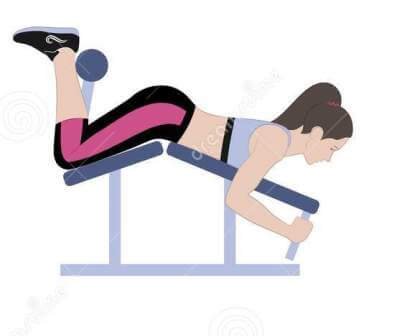
Hamstring Curls
knee pain and instability is weakness of the hamstrings. “At Body Gears Physical Therapy, we use techniques to turn on these weak muscles and then teach you how to do exercises to maintain this activation and to strengthen the hamstrings,
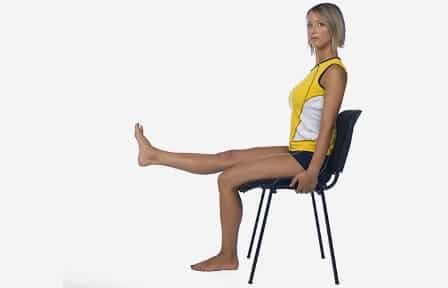
Dynamic Quds
When the muscles attached to your knees are strong, they’ll properly support your knees. This reduces strain and pressure on your knee joints. But if these muscles are weak, they can’t help your knees absorb shock during movement.

Muscle Energy Technique (MET)
Muscle Energy Technique (MET) is a technique that was developed in 1948 by Fred Mitchell, Sr, D.O. It is a form of manual therapy, widely used in Osteopathy, that uses a muscle’s own energy in the form of gentle isometric contractions to relax the muscles via autogenic or reciprocal inhibition and lengthen the muscle.
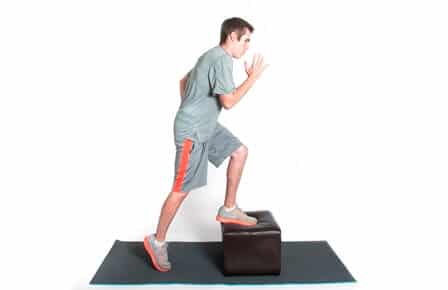
Step-Ups
Strengthening the muscles around the knee will decrease the stress on the joint itself. These muscles include the quadriceps at the front of the thigh and the hamstrings at the back of the thigh. Both of these large muscle groups get a workout when you climb stairs.

Straight Leg Raise
The straight leg exercise is often used in Physical Therapy to help patients improve the strength of their lower extremities. The straight leg raise exercise strengthens the muscles of the upper thigh, the quadriceps, without placing any stress on the knee joint and hip joint.

Kneeling hip flexor stretch
Kneel on your right knee.
Put your left foot on the floor with your left knee at a 90-degree angle.
Drive your hip forward. Maintaining a straight back, lean your torso forward.
Hold the position for 30 seconds.
Repeat 2 to 5 times with each leg, trying to increase your stretch each time.
FREQUENTLY ASKED QUESTIONS
Can physiotherapy cure Knee pain?
knee pain physiotherapy treatment at home is often a recommended treatment for various types of Knee pain. It may help to strengthen key muscles and reduce pain. Knee pain physiotherapy includes exercises for Knee pain and the use of other therapies such as heat, ice or ultrasound to manage pain.
How long does it take to recover from Knee pain
In most cases of Knee pain your knee will heal itself, and staying active and continuing with your usual activities will normally promote healing. Knee pain will usually last from a few days to a few weeks. Pain that lasts longer usually clears up after about six weeks by knee pain physiotherapy treatment at home faster recovery can be achieved.
What is the fastest way to cure Knee pain?
- Exercise to Loosen Muscles. Although it may seem counterintuitive to exercise when Knee pain is causing you grief, the right kind of movement can help eliminate the discomfort. …
Use Hot/Cold Treatments. …
Stretch More. …
Get Better Shoes. …
Reduce Your Stress. …
Get Better Sleep.
WHAT MAKES YOU BETTER THAN OTHER PHYSIOTHERAPISTS?
you’ll benefit from a prompt flexible service. That includes a professional assessment and diagnosis followed by a tailor-made rehabilitation program suited to your individual needs. They have extensive experience, working both in clinics and Physiotherapists’ home visits.
What are the types of Knee pain?
Michael Ashburn, MD, MPH, MBA said identifies three common forms of lower Knee pain:
osteoarthritis.
Muscle spasms.
Radicular pain.
How much does a session of Manual therapy cost?
The average cost of a physiotherapy session is 600 – 700 Rs. This is the average across Pune. The cost of a physiotherapy session can be as low as 500 Rs. as manual therapy is also included in the session you don’t need to pay any extra cost for manual therapy.
How do you know if you need physiotherapy?
If you had a particularly hard day at the gym, you would feel sore afterward. But if your pain is persistent and not getting any better, that is a sure sign that you need to see a physiotherapist. Likewise, mobility and movement are reasonably constant for a person. Sure, with age they change, but not overnight.
WHAT SHOULD I EXPECT ON FIRST VISIT ?
Our Physiotherapists will try to understand what your goals are, they will explain how they will assess you and ask for your consent before they start. After the assessment, the physiotherapist will explain what physiotherapy can help you with, how long it might take, and the expected outcome from the treatment.
